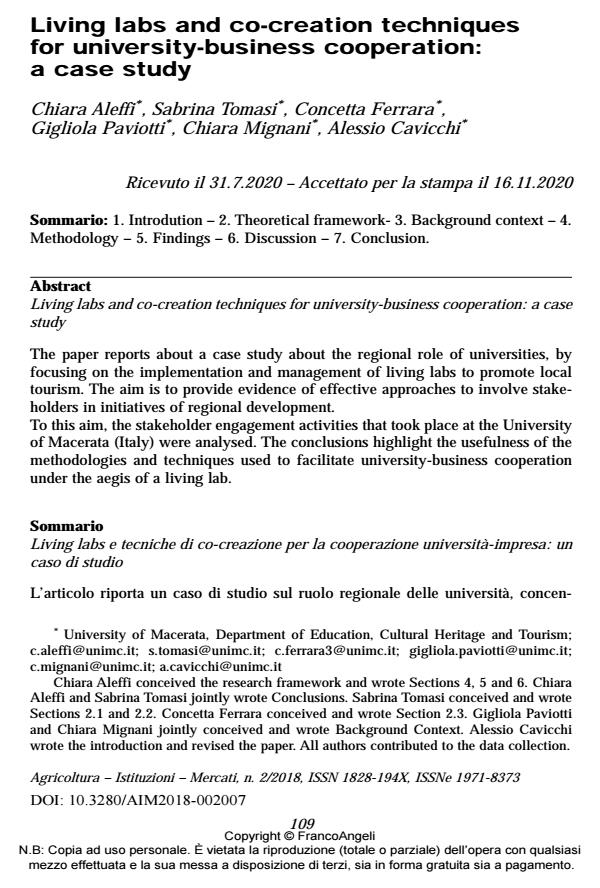Living labs and co-creation techniques for university-business cooperation: a case study
Titolo Rivista AGRICOLTURA ISTITUZIONI MERCATI
Autori/Curatori Chiara Aleffi, Sabrina Tomasi, Concetta Ferrara, Gigliola Paviotti, Chiara Mignani, Alessio Cavicchi
Anno di pubblicazione 2021 Fascicolo 2018/2
Lingua Inglese Numero pagine 23 P. 109-131 Dimensione file 129 KB
DOI 10.3280/AIM2018-002007
Il DOI è il codice a barre della proprietà intellettuale: per saperne di più
clicca qui
Qui sotto puoi vedere in anteprima la prima pagina di questo articolo.
Se questo articolo ti interessa, lo puoi acquistare (e scaricare in formato pdf) seguendo le facili indicazioni per acquistare il download credit. Acquista Download Credits per scaricare questo Articolo in formato PDF

FrancoAngeli è membro della Publishers International Linking Association, Inc (PILA)associazione indipendente e non profit per facilitare (attraverso i servizi tecnologici implementati da CrossRef.org) l’accesso degli studiosi ai contenuti digitali nelle pubblicazioni professionali e scientifiche
The paper reports about a case study about the regional role of universities, by focusing on the implementation and management of living labs to promote local tourism. The aim is to provide evidence of effective approaches to involve stakeholders in initiatives of regional development. To this aim, the stakeholder engagement activities that took place at the University of Macerata (Italy) were analysed. The conclusions highlight the usefulness of the methodologies and techniques used to facilitate university-business cooperation under the aegis of a living lab.
Parole chiave:Living labs, co-creazione, coinvolgimento degli stakeholders, sviluppo regionale, cooperazione università-imprese, approcci partecipativi.
Chiara Aleffi, Sabrina Tomasi, Concetta Ferrara, Gigliola Paviotti, Chiara Mignani, Alessio Cavicchi, Living labs and co-creation techniques for university-business cooperation: a case study in "AGRICOLTURA ISTITUZIONI MERCATI " 2/2018, pp 109-131, DOI: 10.3280/AIM2018-002007